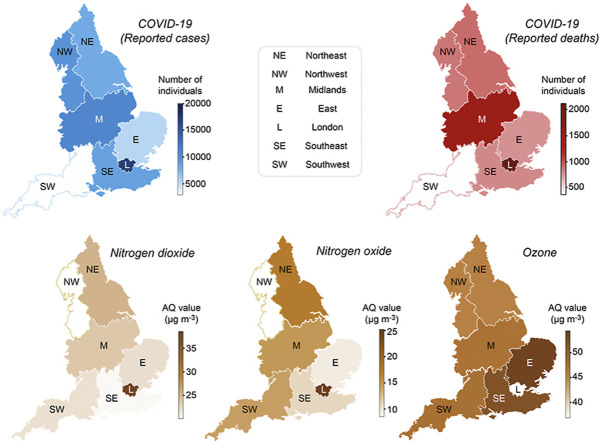- Record: found
- Abstract: found
- Article: not found
Links between air pollution and COVID-19 in England ☆

Read this article at
Abstract
In December 2019, a novel disease, coronavirus disease 19 (COVID-19), emerged in Wuhan, People’s Republic of China. COVID-19 is caused by a novel coronavirus (SARS-CoV-2) presumed to have jumped species from another mammal to humans. This virus has caused a rapidly spreading global pandemic. To date, over 300,000 cases of COVID-19 have been reported in England and over 40,000 patients have died. While progress has been achieved in managing this disease, the factors in addition to age that affect the severity and mortality of COVID-19 have not been clearly identified. Recent studies of COVID-19 in several countries identified links between air pollution and death rates. Here, we explored potential links between major fossil fuel-related air pollutants and SARS-CoV-2 mortality in England. We compared current SARS-CoV-2 cases and deaths from public databases to both regional and subregional air pollution data monitored at multiple sites across England. After controlling for population density, age and median income, we show positive relationships between air pollutant concentrations, particularly nitrogen oxides, and COVID-19 mortality and infectivity. Using detailed UK Biobank data, we further show that PM 2.5 was a major contributor to COVID-19 cases in England, as an increase of 1 m 3 in the long-term average of PM 2.5 was associated with a 12% increase in COVID-19 cases. The relationship between air pollution and COVID-19 withstands variations in the temporal scale of assessments (single-year vs 5-year average) and remains significant after adjusting for socioeconomic, demographic and health-related variables. We conclude that a small increase in air pollution leads to a large increase in the COVID-19 infectivity and mortality rate in England. This study provides a framework to guide both health and emissions policies in countries affected by this pandemic.
Graphical abstract
Highlights
Related collections
Most cited references49
- Record: found
- Abstract: found
- Article: not found
Clinical features of patients infected with 2019 novel coronavirus in Wuhan, China
- Record: found
- Abstract: found
- Article: not found
A Novel Coronavirus from Patients with Pneumonia in China, 2019

- Record: found
- Abstract: found
- Article: found

